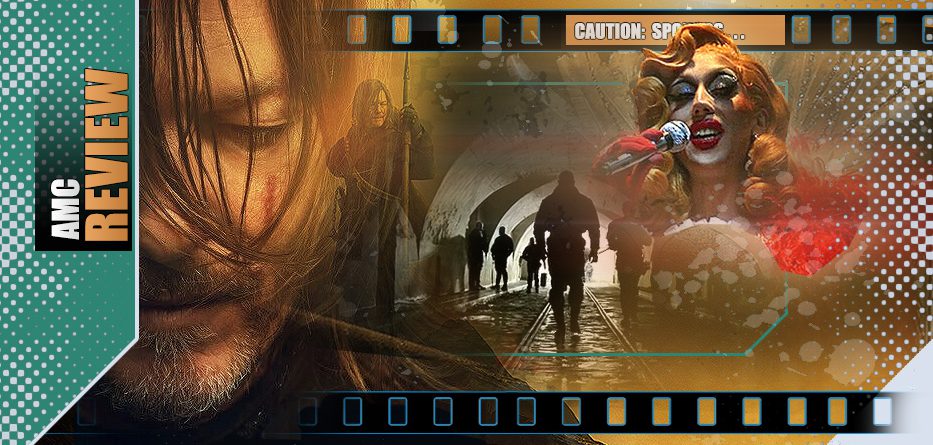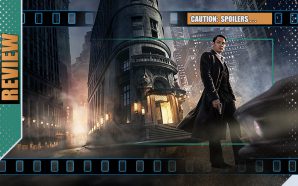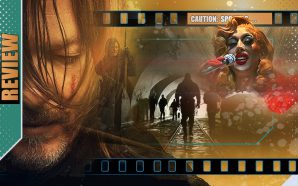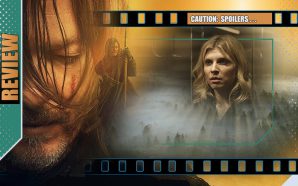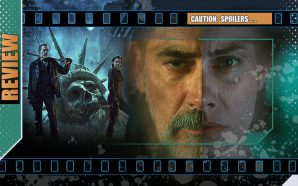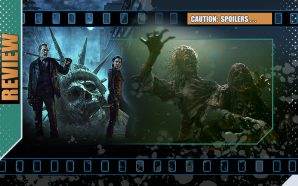Isabelle has promised Daryl that if he gets them to Paris, she will connect him with those who might have the radio he needs. But after a grand-guignol diversion, the arrival in the French capital is met with surprises for both of them. Paris has always been a city known for both being a home to creative outliers and also finding ways to survive adversity – and both remain true, even after an apocalypse.
*spoilers*
As seems to be the case thus far, episodes of The Walking Dead: Daryl Dixon are taking their name from classic French songs, this week coming from the lyrically on-the-nose 1930s’ Maurice Chevalier song Paris Sera Toujours Paris (translated: Paris will always be Paris) extolling the virtues and resilience of Paris itself.
The first act of this week’s episode is a bit of a disconnect from everything else – a stopover on the way to Paris and one that ends in some ghoulish body-horror that might be considered quirky by some but definitely a case of ‘ewwwww‘ by the majority. Isabelle stops off at on the network outposts to see if they can find a radio that Daryl could use, only to find that the elderly operative has clearly had a breakdown… and turned the old theatre in which he lives into a makeshift undead stage-act. The zombies are strung up, giving the appearance of playing instruments like some tableau brought to (un-)life and the radio has been equally ‘disassembled’ to provide some of the equipment needed to support the ‘act’. It’s a weird and surreal sequence and dead-end detour, one that just goes to show that people react to the ‘end of days’ in different ways.
As noted in previous reviews, one thing that the show does remarkably well is maximise its location-work. While the Manhattan of Dead City was all too often badly composited skyscrapers and generic backdrops, Daryl Dixon puts a lot of effort into creating its locations. In many cases, this being Europe, the immediate backdrops are natural – exquisite old chateaus, narrow back-streets and areas that only require some apocalyptic window-dressing and then faux-pixel extensions to make them suitable. With the travellers arriving in Paris, to a gallic soundtrack of ‘People are Strange…‘ there’s a bit more to be done in post-production than in previous weeks – you want recognisable landmarks, but can’t shut down and ransack a capital city just for a few moments of screen-time. But while those who know the layout of the French metropolis better than others (why, hello, Quai de Tournelle!) may note the odd way that our heroes miraculously cross-cross the city with tweaked backdrops – keeping the distant Eiffel Tower as a regular distant touchstone from different angles, there are only a few moments when the CGI breaks down the illusion. Otherwise, the casual viewer might well marvel at the way the show integrates its cast into the exterior shots far more convincingly than many of the franchise’s previous offerings. (That being said, the relative ease in which Daryl and his friends and foes seem to quickly dart around Northern France whether by car or via horse and cart to get there, does belie a little of the wider geography of the country for the sake of pacing).
Like Dead City, we do have a nasty case of falling corpses, only this is the more acidic variety seem to be able to survive the plummet and get back up again. (Here the CGI is a little uncanny valley for the ‘splat’ effect, but it is all balanced out with genuine tension (as Daryl smartly uses those ‘burning’ qualities to formulate an exit strategy) and pathos (Isabelle encounters the reanimated form of the little girl she left behind in the second episode’s urban flashback)
The show has kept the messianic aspects of Laurent as lip-service for the moment, with regular dialogue showing that Isabelle may be the only one truly convinced of his larger role. His parentage has slowly been revealed – we learned that his mother was Isabelle’s sister Lily and now we’re shown that his father is likely to be Quinn (Isabelle’s ‘associate’ – played by Adam Nagaitis – from whom she drove away in the second episode’s significant flashback). He’s now a purveyor of illicit delights in the literal French underground – which could prove a help or a hinderence given that he might understandably hold a grudge. There’s a few throwaway moments and lines of dialogue this week – with the boy stating, very matter-of-factly – that Daryl isn’t destined to die in Paris and the boy’s easy manner with a grieving widow that does suggest something quietly preternatural about him, if not exactly divine.
Quinn’s club – Demimonde – will no doubt have some people muttering about up-to-date overt representation with its bohemian tone, fluid sexual ambiguities and sense of outlier haven – if so, then the viewer probably needs a history lesson of the way that Europe has always embraced such things, particularly in the face of oppression, war and disaster. The subterranean den echoes much of the feeling of France’s past underground glories and tragedies and the Berlin clubs that flexed their muscles as World War II approached. The drag show and cabaret works well, creating a sense of space and mood and even on a television budget shows how well a production-design budget can be utilised and, with reference to the Chevalier song, there are original, historical works of art adorning its cavernous walls. (It’s also good to see that Paris’ catacombs are used – both as location and metaphor – the walls of skulls likely recreated for the episode rather than shooting in the problematic real dark recesses of the city’s infamous underground alleyways of the dead – but it’s just another pointer as to how rich the French locations can bring the show alive…) On the other end of the vertical scale, the rooftop chase and fight between Daryl and bad-guy henchman Codron also works well, largely due to good camera-work and editing, cutting between up-close-and-personal conflict, and the multi-level hodge-podge of roofing. Again, the sense of location and scale really helps.
This feels like a busy episode, albeit one that changes the pace without ever losing the urgency. It’s a celebration of apocalypse as art-form and though keeping apace with all classic TWD elements, this mixture of bloodshed and burlesque could only be done in Paris…

- Story8
- Acting8
- Directing9
- Production Design / VFX9

